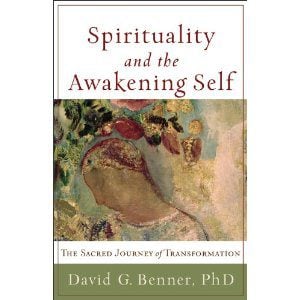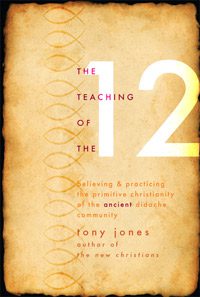A few months ago I made an aside in my review of the book Will There Be Faith? A New Vision for Educating and Growing Disciples that the author Thomas Groome, a master in the field of Christian Education, includes one of the best responses I’ve ever heard to the statement from his nine-year-old son, “Hey, Dad, I think I don’t believe in Santa Claus anymore” (300-301). In the spirit of the holidays, I will share Groome’s response.
Groome calls his model “Life to Faith to Life,” and it include five “movements.” For Movement 1, Groome echoes his child’s question to determine more specifically what his son means and to avoid one of the classic parenting errors of over-explaining in response to a question the child wasn’t really asking. Groome said, “What do you mean you don’t believe in Santa Claus anymore?” Groome writes, “It turned out that his first doubts were more about the reindeer flying through the air than about Santa himself. I asked how he felt about not believing. He felt sad for the loss of toys, but he also wondered whether we’d simply lied to him, a more important issue.”
For Movement 2, Groom asked, “Why stop believing in Santa Claus now?” His son responded that, “Nearly no one in third grade believed it anymore.” Then Groome “asked if that was a good reason and where his closest friends stood on the matter, whereupon he posed the direct question, ‘There isn’t really a Santa Claus, right?’ I knew it was time to share the true Santa story and the wisdom of it.”
Movement 3 was telling the story of Santa Claus’ origins in the story of St. Nicholas, the patron saint of anonymous gift giving, whose story is annually celebrated on December 6 in many Christian traditions. There are an increasing number of children’s book that can help parents tell this story such as Julie Stiegemeyer’s Saint Nicholas: The Real Story of the Christmas Legend. (I’m still in the process of researching a children’s version of the Saint Nicholas story with thoroughgoing progressive theology. If you know of one, please let me know in the comments section.)
Groome then Googled the famous New York Sun editorial of September 21, 1897, “Yes, Virginia, There Is a Santa Claus,” which he and his son then discussed. Alternately, you can watch a visualization of this correspondence on YouTube.
Movement 4 transitions to a focus on the child’s life, and Groome asked, “So what do you think? Is Santa a good idea? Are you sorry or happy we [told you the Santa story]? Were we lying or being loving to you?” “Gradually,” Groome writes, “Teddy came to see and agree that Santa Claus is a great idea.”
Then, in a classic embodiment of Groome’s final movement toward the practical, Groome writes that Teddy “inquired if he’d still get presents at Christmas time. I assured him that of course he would and that the spirit of Santa will always live on, even if not as a fat old man with a white beard and a red suit. Teddy agreed with, ‘That’s cool, Dad.'”
What other good responses have you heard to late childhood incredulity about the existence of old St. Nick?
I also can’t stop myself from adding that, as good as Groome’s response is, I can’t help wondering why Christians don’t tell the St. Nicholas story in the first place, and ditch the whole Santa myth. This option would avoid the potential, “Why did my parents lie to me?” dilemma in the first place. Moreover, imagine the anti-consumerism statement that Christians could make if they spent December 6 (St. Nicholas’ Feast Day) giving anonymous gifts to underprivileged families and December 25 (The Feast of the Nativity) going to church, sharing a meal together, and singing carols instead of exchanging presents. Christmas is Jesus’ birthday, after all, not ours. I realize that there is immense pressure on parents to tell the Santa story, but Jews, Hindus, and all manner of other non-Christians manage to prosper in our society without telling the Santa story to their children.
Alternately, the Advent Conspiracy movement is helping change the conversation about the purpose of Advent with their theme of “Worship Fully – Spend Less – Give More – Love All.”
More radically, the Mennonites have begun a campaign called Buy Nothing Christmas that seeks to say a “prophetic ‘no’ to the patterns of over-consumption of middle-class North Americans. They are inviting Christians to join a movement to de-commercialize Christmas and re-design a Christian lifestyle that is richer in meaning, smaller in impact upon the earth, and greater in giving to people less-privileged.”
For some historical context, Jon Stewart delivered a brilliant opening monologue recently skewering the so-called “War on Christmas”:
Religious freedom is on the rocks. Of course, not as on the rocks as it was in the 17th century when…the Pilgrims outlawed Christmas celebrations as a sacrilege, and declared gifts and Christmas decorations satanical, levying a five shilling fine on anyone for saying “Merry Christmas.”
Watch the full clip here. (Note: For background research, The Daily Show is drawing from Christmas Unwrapped: Consumerism, Christ, and Culture, edited by Richard Horsley and James Tracy.)
More Resources for a More Meaningful Advent and Christmas Season
Books
- Marcus Borg and John Dominic Crossan, The First Christmas: What the Gospels Really Teach About Jesus’s Birth.
- Michael Slaughter, Christmas Is Not Your Birthday: Experience the Joy of Living and Giving like Jesus.
- Anna Getty, I’m Dreaming of a Green Christmas: Gifts, Decorations, and Recipes that Use Less and Mean More.
- Bill McKibben, Hundred Dollar Holiday: The Case For A More Joyful Christmas.
- Jo Robinson, Unplug the Christmas Machine: A Complete Guide to Putting Love and Joy Back into the Season.
- Rick McKinley, et al, Advent Conspiracy: Can Christmas Still Change the World?
Websites
- The Advent Conspiracy: www.adventconspiracy.org
- New American Dream, “Simplify the Holidays”: www.newdream.org/holiday
- “Tips for Parenting in a Commercial Culture”:www.newdream.org/kids/kids-brochure.pdf
- Buy Nothing Christmas www.buynothingchristmas.org.
- Carl Gregg, Progressive Christian Reflections on Advent
BONUS: One Congregation’s Journey Toward Telling the St. Nicholas Story
(imagining what it could look like to stop telling the commodified, consumeristic Santa Claus tale)
Asheville, NC, congregation organizes “St. Nicholas Day” activities
(December 7, 2004)
Members of the Circle of Mercy Congregation in Asheville, N.C., have long been concerned about the commercial effects of Christmas, especially on the spiritual lives of their children. So to counter the corruption of holiday, and to revive one of the oldest traditions behind the modern figure of “Santa Claus,” the congregation organized St. Nicholas Day activities by delivering food to people in need and doing it anonymously.
“We’ve always been very ambivalent about Santa Claus in our house,” said Colleen Burnet, a congregation member and organizer of the days activities. “Giving our children another story to associate with Christmas that of St. Nicholas helps us retrieve the holiday from the habits of consumerism.”
St. Nicholas, a fourth century Christian leader from the Middle East (what is now the nation of Turkey), was known for giving gifts to those in need anonymously, without taking credit for the gift or letting them know who he was.
The idea for the St. Nicholas Day activity came from Ken and Nancy Sehested who, along with Joyce Hollyday, serve as co-pastors of Circle of Mercy.
“We did this with our kids when they were young,” the Sehesteds said. “It was a great adventure to load up our car with boxes of food, take it to the houses of people we knew were living on the financial edge, ring the door bell and then race back to the car. Our kids loved the drama. And it was a great way not just to perform charity but, more importantly, to provide spiritual direction and focus for our daughters.”
Each box of food delivered contained a printed note explaining who St. Nicholas was and saying: “Our church believes this tradition is more in keeping with the Christian story of Christmas and the birth of Jesus. To encourage our children to think of Christmas this way, we honor St. Nicholas on his feast day, December 6.
“Thats the reason we give this box of food, secretly delivered by our children. Please accept it as a sign of Gods generous love, freely given, without need for recognition.”
The Rev. Carl Gregg is a trained spiritual director, a D.Min. candidate at San Francisco Theological Seminary, and the pastor of Broadview Church in Chesapeake Beach, Maryland. Follow him on Facebook (facebook.com/carlgregg) and Twitter (@carlgregg).












